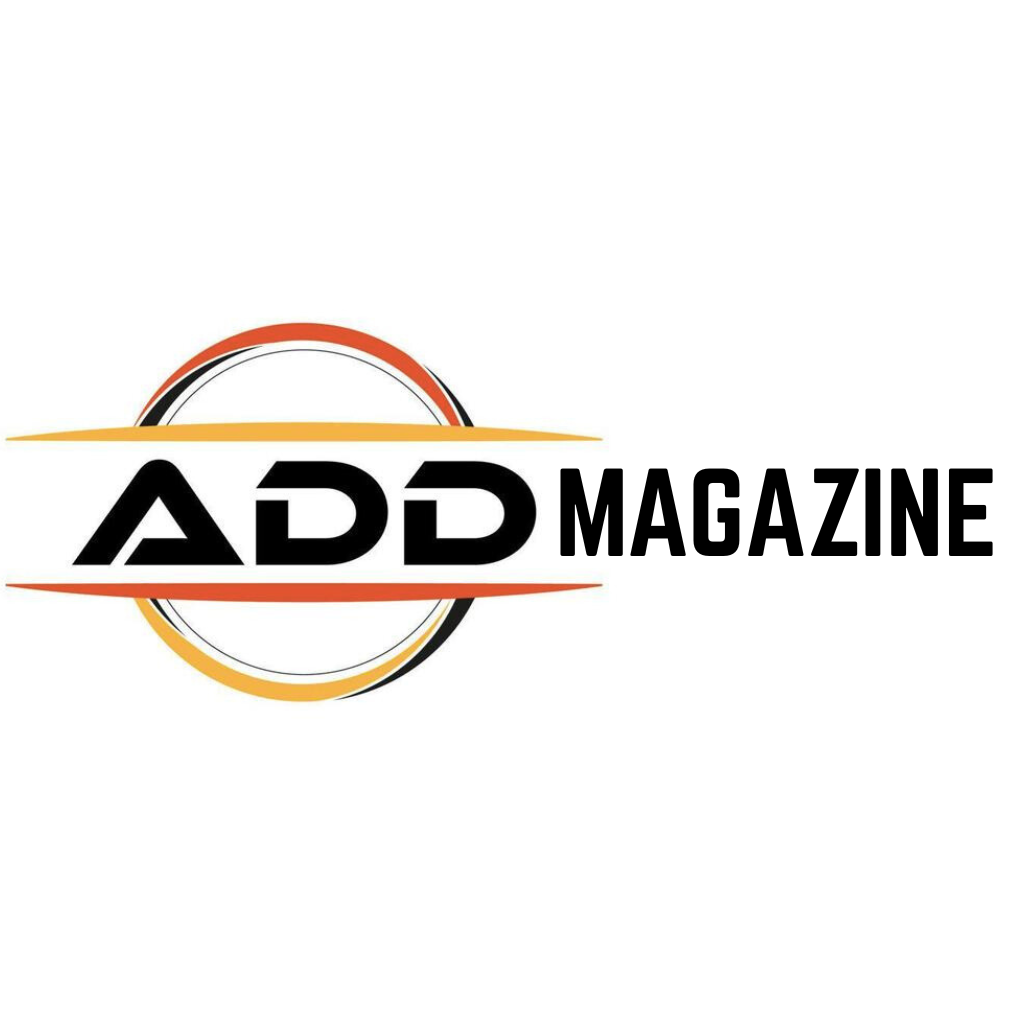In today’s fast-paced world, managing time efficiently is essential for both professionals and individuals. Whether you’re a freelancer, business owner, or someone trying to balance personal and work commitments, the task of scheduling can become overwhelming. This is where scheduling tools like Schedow come in, offering an easy and efficient way to organize your time, avoid conflicts, and optimize your workflow.
Schedow is a relatively new scheduling solution designed to simplify how we manage our time, appointments, and tasks. With its powerful features, it promises to reduce the hassle of traditional scheduling, enabling users to focus more on their work and less on logistics. In this article, we’ll explore how Schedow works, its core features, benefits, and potential drawbacks, so you can determine if it’s the right tool for you.
What is Schedow?
Schedow is an online scheduling platform that allows users to manage appointments, meetings, and tasks in a streamlined, efficient way. Designed for both individuals and teams, it aims to eliminate the complexities that come with traditional scheduling. Whether you’re handling a single calendar or multiple team calendars, Schedow integrates all your scheduling needs into one place.
By automating the scheduling process, Schedow helps users eliminate the need for back-and-forth emails, phone calls, or manual calendar management. Instead, you can simply set up your availability, share a scheduling link, and let others choose their preferred time slots, all while syncing with your existing calendar (Google Calendar, Outlook, etc.).
Core Features of Schedow
1. Calendar Integration
Schedow integrates seamlessly with popular calendar systems, such as Google Calendar and Outlook. This allows users to sync their existing calendar with the Schedow platform. With this feature, any changes made to your calendar (e.g., an appointment added or moved) will automatically reflect in your Schedow account.
This integration prevents scheduling conflicts and ensures that your availability is always up-to-date, eliminating the risk of double-bookings.
2. Custom Availability & Event Types
One of Schedow’s standout features is the ability to define your availability for different types of events. For example, you can set different time slots for consultations, meetings, or personal appointments. Schedow also lets you specify the duration of each event, as well as buffer times between meetings to avoid overlapping or back-to-back appointments.
Users can create multiple types of events with customized rules such as maximum bookings per day, specific availability hours, and recurring events (e.g., weekly or monthly meetings). This flexibility ensures that the scheduling process is tailored to the user’s needs, whether for personal or business purposes.
3. Automated Scheduling Links
Instead of manually coordinating times with others, Schedow allows users to generate custom scheduling links. These links can be shared via email, embedded in websites, or included in social media profiles. When someone clicks the link, they are shown a list of available time slots based on your defined availability and can choose the time that works best for them.
This feature significantly reduces the back-and-forth often required in traditional scheduling. Clients, colleagues, or anyone you’re coordinating with can pick a time without needing to consult you first. This not only saves time but also ensures a smoother experience for all parties involved.
4. Automated Reminders & Notifications
One of the biggest pain points in scheduling is missed appointments or last-minute cancellations. Schedow combats this by sending automated reminders to both the user and the invitee. These reminders can be set for different intervals—whether 24 hours, 1 hour, or 30 minutes before the scheduled event.
In addition to reminders, Schedow also sends notifications if an event is rescheduled or canceled, ensuring everyone stays updated in real-time.
5. Task & Workflow Management
Schedow isn’t just a scheduling tool; it also helps manage tasks and workflows. By syncing your calendar with task management systems, users can view their appointments alongside their to-do lists, deadlines, and other work-related activities.
Schedow’s task management features let you prioritize tasks, set deadlines, and track your progress—all within the same platform. This integration of scheduling and task management allows users to better plan their day, ensuring that meetings and appointments don’t interfere with essential tasks.
6. Cross-Device Syncing
Schedow supports cross-device syncing, meaning your schedule is accessible from anywhere—whether on your phone, tablet, or desktop. This ensures that you’re always up-to-date on the go and never miss an important meeting or event, regardless of which device you’re using.
Benefits of Using Schedow
1. Saves Time
Scheduling can be time-consuming, especially when managing multiple calendars or coordinating with different people. With Schedow, you eliminate the need for endless email exchanges or phone calls to find mutually convenient meeting times. The scheduling link feature streamlines this process, saving both time and effort.
2. Reduces Scheduling Conflicts
By syncing with your existing calendar and allowing you to define your availability, Schedow helps eliminate scheduling conflicts. It ensures that you only receive meeting requests during the times you’ve made available, thus preventing double-bookings.
3. Enhances Professionalism
For businesses and freelancers, Schedow can enhance professionalism by offering a seamless scheduling experience for clients. With customizable booking links, clients can easily schedule time with you based on your availability, without the hassle of back-and-forth communication.
Moreover, automated reminders help reduce no-shows, further maintaining a professional standard.
4. Improves Organization
Schedow helps keep all your appointments and tasks organized in one place. By allowing you to view your calendar alongside your tasks, you get a unified view of your day, making it easier to prioritize your activities and manage your time effectively.
5. Data-Driven Insights
Schedow offers analytical features that allow users to track key metrics like booking trends, peak times, no-shows, and more. These insights can be used to adjust your availability, improve your scheduling strategy, and optimize time allocation for your meetings or tasks.
Potential Drawbacks of Schedow
1. Learning Curve
While Schedow is designed to be user-friendly, like any new software, there can be a learning curve for new users. Setting up your calendar, defining availability, and configuring reminders can take some time, especially if you’re using the tool for the first time.
2. Dependence on Technology
Schedow relies on technology for scheduling, which means there’s always the potential for technical issues or glitches. While this is common to any online tool, users need to ensure they have a stable internet connection to make the most of the platform.
3. Over-Automation Risks
Some users may feel uncomfortable with the level of automation that comes with scheduling tools like Schedow. For instance, for complex or highly dynamic meetings, an automated system may lack the nuance and flexibility of human judgment.
4. Limited Integrations
Although Schedow integrates with popular calendars like Google and Outlook, its support for other third-party applications (CRM systems, project management tools, etc.) may be limited compared to other scheduling platforms.
How Does Schedow Compare to Other Scheduling Tools?
Schedow is one of many scheduling tools available today, but it stands out with its combination of calendar integration, task management, and analytics features. To understand its value better, let’s compare it with other popular scheduling tools.
Calendly
Calendly is one of the most well-known scheduling platforms, offering a simple, intuitive interface. Like Schedow, Calendly allows users to share scheduling links and sync calendars. However, Schedow goes beyond basic scheduling by integrating task management and providing detailed analytics.
Acuity Scheduling
Acuity Scheduling offers similar features to Schedow, such as calendar syncing and automated reminders. It also supports payment integrations, which is useful for service-based businesses. However, Schedow’s task and workflow management system gives it an edge for users who need to manage more than just appointments.
Doodle
Doodle is primarily used for group scheduling, making it ideal for organizing meetings with multiple participants. While it does offer basic scheduling features, it lacks the deeper integration with task management systems that Schedow provides.
Practical Uses of Schedow
Freelancers
Freelancers who manage their own schedules can benefit greatly from Schedow. By setting up customized availability slots for client calls, consultations, and project meetings, freelancers can simplify the booking process and ensure they don’t overbook or forget an appointment. Automated reminders also help prevent no-shows.
Small Businesses
For small businesses with teams who need to coordinate schedules, Schedow offers a simple, efficient way to sync everyone’s calendar. This is particularly useful for businesses with clients who need to book time with employees or departments (e.g., sales teams, customer service reps, or consultants).
Service Providers
Service providers, such as health coaches, therapists, or tutors, can use Schedow to allow clients to easily book sessions. Schedow’s ability to offer recurring events, along with automated reminders, ensures that clients show up on time, and that the service provider’s schedule remains organized.
Advanced Features and Customization
Schedow stands out in the world of scheduling tools because it offers multiple layers of customization. This flexibility allows users to tailor the platform to their exact needs, ensuring they get the most out of their scheduling experience.
- Customizable Event Durations: Users can define the duration of each event type, ensuring that meetings and tasks are allocated the right amount of time. For instance, a 30-minute consultation is different from a 90-minute team meeting.
- Buffer Time: Schedow lets users set buffer times between meetings. This ensures that users have a moment to breathe, prepare, or handle minor delays before jumping into the next meeting.
- Recurring Events: For users with routine tasks or meetings, Schedow allows for recurring events to be scheduled with ease. This is particularly helpful for regular appointments or team check-ins.
- Time Zone Adjustments: Whether you’re scheduling meetings across different time zones or managing a global team, Schedow automatically adjusts the availability and meeting times based on the time zone of each participant.
- Event Visibility: Users can choose whether their events are visible to others or kept private. This gives an additional layer of control over your schedule.
- Multiple Calendars Integration: If you manage different calendars for work, personal, or side projects, Schedow allows you to integrate all of them in one platform, ensuring everything is synced.
These advanced features not only make scheduling simpler but also ensure that users can handle complex scheduling needs without manual intervention.
Benefits for Teams and Businesses
Schedow is not just designed for individuals but also offers robust features that benefit teams and businesses. With collaborative features and seamless team integration, Schedow can enhance workplace productivity and communication.
- Team Scheduling: Schedow supports multiple team members, allowing organizations to sync various calendars. This feature is invaluable for teams who need to collaborate on scheduling meetings, interviews, or client consultations.
- Centralized Scheduling: Team leaders or managers can oversee all team members’ availability in one dashboard, ensuring there are no overlaps or scheduling conflicts.
- Group Booking: For businesses that host client workshops or group calls, Schedow enables group scheduling. Multiple people can select the same time slot, making it easier to organize events with larger groups.
- Custom Roles and Permissions: Organizations can assign specific roles to team members, such as administrators, team leaders, or contributors. Each role can have different permissions, ensuring proper control over scheduling.
- Client Booking Management: Schedow allows businesses to provide their clients with a self-booking option, reducing administrative burdens while offering an easy and professional experience for the clients.
- Client Reminders & Notifications: Businesses can send custom reminders and notifications to clients about upcoming meetings or appointments, improving client satisfaction by reducing no-shows.
By incorporating these features, Schedow creates a system that helps teams work more efficiently while maintaining a high level of organization.
Schedow for Service Providers
Service providers like therapists, coaches, tutors, and consultants can significantly benefit from Schedow’s scheduling and management features. The platform makes it easy for these professionals to manage their time and appointments while providing clients with an easy booking experience.
- Client Self-Booking: Schedow provides a seamless self-booking system where clients can select a time that works for them, reducing the time service providers spend on administrative tasks.
- Automatic Reminders: Service providers can set up automatic reminders for their clients, ensuring that they don’t forget about their appointments. This can also reduce the number of last-minute cancellations.
- Service Customization: Service providers can create custom event types for different services offered, such as 30-minute consultations, hour-long sessions, or package deals, making it easy for clients to choose the right option.
- Payment Integration: For service providers who charge for consultations or sessions, Schedow can integrate with payment platforms, allowing clients to pay for their services during the booking process.
- Booking History: Schedow tracks booking history, enabling service providers to review past appointments and follow up with clients as needed.
- Mobile Access: Service providers can access and manage their appointments on the go, giving them the flexibility to make last-minute adjustments or check their calendar anytime.
These benefits make Schedow a valuable tool for any service provider looking to simplify scheduling while maintaining professionalism and efficiency.
Managing Personal & Professional Life with Schedow
One of the key strengths of Schedow is its ability to balance both personal and professional appointments. Many users struggle to juggle work meetings with family, fitness, or social commitments, but Schedow makes it easy to manage all aspects of your life from one platform.
- Separate Calendars: Users can create separate calendars for personal, work, and other activities, and Schedow will automatically sync and manage them in one place.
- Time Blocking: With Schedow, you can block out specific times of the day for personal tasks, such as exercise, family time, or self-care, ensuring that these commitments are given priority.
- One Link for All: Instead of sharing multiple calendars or scheduling links, users can have a single booking link that combines both work and personal availability.
- Reminders for Personal Activities: Just like work meetings, personal activities such as medical appointments or family gatherings can also be scheduled, with automated reminders sent to you.
- No Overlap: Schedow’s integration and syncing features ensure that your personal appointments do not conflict with your work commitments, maintaining a clear boundary between the two.
- Task Management: Users can combine their task lists and events on the same platform, helping to visualize their daily responsibilities. This reduces the likelihood of overlooking important activities.
Schedow helps maintain balance in busy lives by allowing seamless scheduling and ensuring that personal time doesn’t get overlooked in the hustle of professional life.
Optimizing Schedow with Advanced Analytics
For business owners and teams, Schedow’s analytics features provide valuable insights into how time is spent and what adjustments need to be made. This data-driven approach helps refine scheduling strategies and increase overall productivity.
- Booking Patterns: Schedow tracks when bookings are most frequent, allowing you to optimize your availability. For example, if you see that Monday afternoons are highly requested, you can open up more slots during that time.
- No-Show Rates: By tracking no-shows, Schedow helps businesses identify patterns and adjust strategies. For example, businesses can implement a confirmation process or adjust their scheduling policies to reduce no-shows.
- Peak Hours Identification: Schedow identifies peak hours during which most of your meetings take place. This helps in managing staffing needs or adjusting availability to match demand.
- Event Type Performance: Analytics also break down which types of events (e.g., consultations, meetings, workshops) are most popular. This data can inform business decisions about what services to promote or expand.
- Client Preferences: By analyzing booking data, businesses can identify client preferences regarding timing, duration, and even service types, helping to create more personalized experiences.
- Resource Allocation: For team-based scheduling, Schedow’s data can help managers allocate resources more effectively, ensuring that the right team members are available when needed.
This analytical approach ensures that scheduling becomes a strategic function, not just a logistical one, ultimately improving the efficiency of your operations.
How to Get Started with Schedow
Getting started with Schedow is a simple process that involves creating an account, integrating your calendar, and defining your availability. Here’s a quick step-by-step guide:
- Sign Up for an Account: Go to the Schedow website and sign up for a new account. Choose between free or premium plans based on your needs.
- Integrate Your Calendar: Sync your existing calendar (Google, Outlook, etc.) with Schedow. This ensures that all your meetings and appointments are accounted for.
- Set Your Availability: Define your preferred working hours, and set specific time slots for different types of events (meetings, consultations, personal time).
- Create Event Types: Customize your event types by setting durations, availability, and any specific rules or conditions (e.g., maximum bookings per day).
- Generate Your Booking Link: Once everything is set up, create your scheduling link, and share it with clients, colleagues, or anyone who needs to book time with you.
- Monitor Analytics: As you begin using Schedow, monitor the analytics to track your performance, adjust your availability, and make improvements as needed.
With these simple steps, you’ll be up and running, enjoying the benefits of efficient and stress-free scheduling.
Conclusion: Is Schedow the Right Tool for You?
Schedow offers a powerful suite of features designed to simplify the scheduling process, from calendar integration to automated reminders and task management. For individuals, small businesses, and teams, it can save time, reduce scheduling conflicts, and improve overall productivity.
However, it’s important to consider whether you need the additional features that Schedow provides, such as task management and analytics. If your scheduling needs are more straightforward, other tools like Calendly may suffice. But if you’re looking for a more comprehensive solution that also helps you manage tasks and track trends, Schedow is worth considering.
Ultimately, the choice depends on your specific needs. If you value simplicity and efficiency in your scheduling workflow, and need a system that integrates seamlessly with your existing tools, Schedow could be the perfect addition to your productivity arsenal.




